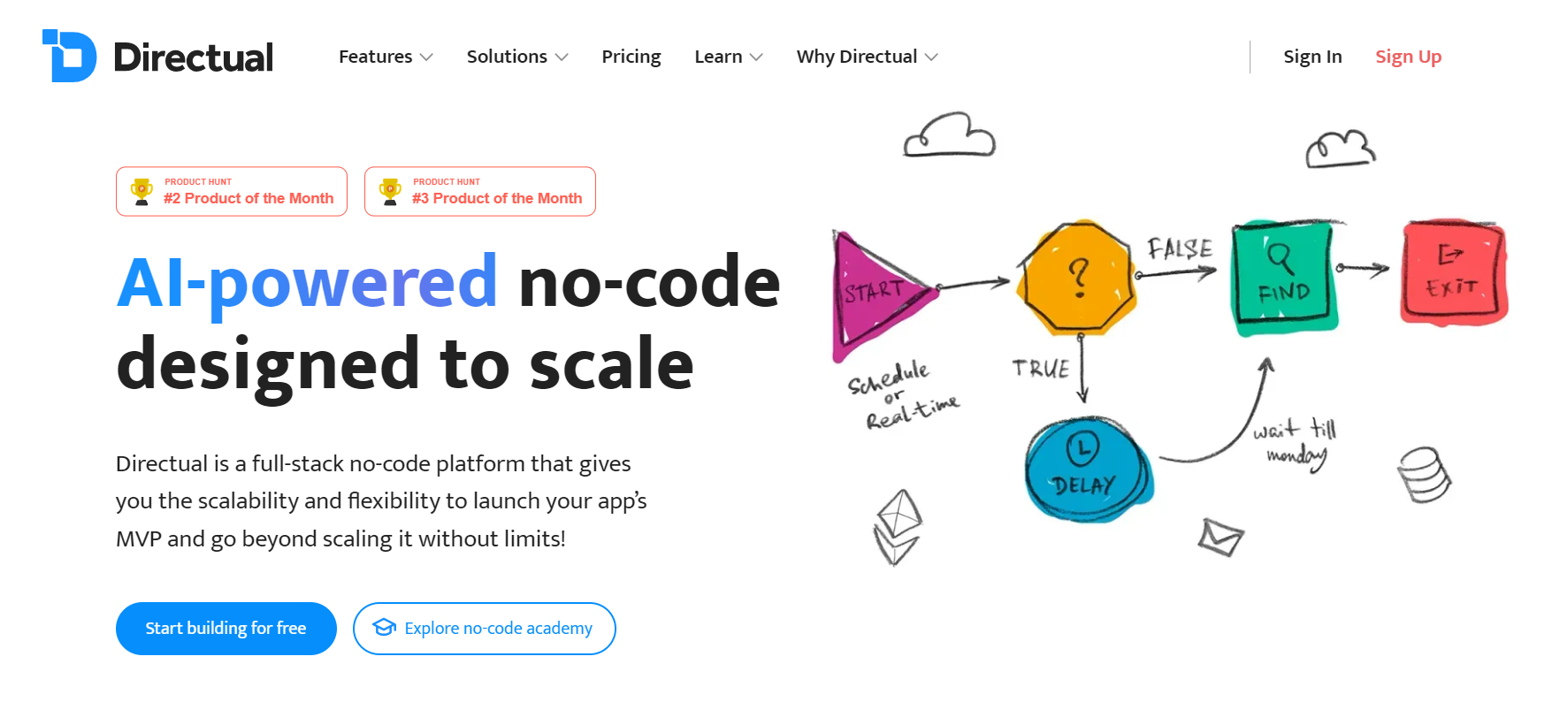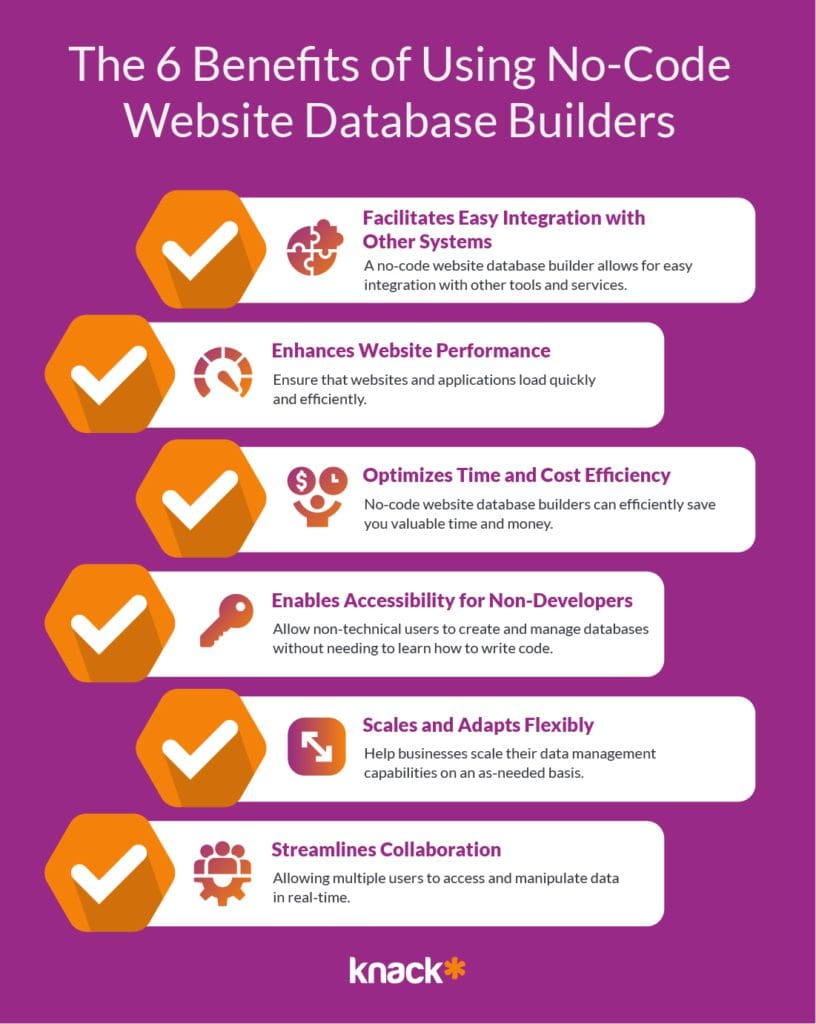Improve Open Platform Database Development with No-Code Advancement Operatings Systems
Improve Open Platform Database Development with No-Code Advancement Operatings Systems
Blog Article
Checking Out the Benefits of Scalable Databases That Call For No Coding Abilities for Reliable Data Management Solutions
The development of scalable databases that get rid of the necessity for coding skills offers a transformative possibility for organizations looking for efficient data monitoring options. As we think about the effects of such improvements, it comes to be important to examine how they can reshape the landscape of information administration and drive lasting development in a competitive setting.
Boosted Access for Individuals
Improved access for customers is a crucial facet of scalable databases, ensuring that data monitoring systems are instinctive and user-friendly. In a period where data-driven decisions are extremely important, access permits a larger range of individuals, consisting of those without comprehensive technical proficiency, to involve with database systems properly. This democratization of information accessibility assists in enhanced collaboration across divisions, equipping employees to draw out understandings and make notified decisions.
User-friendly interfaces, such as visual information and drag-and-drop functions representation, streamline complex information interactions. These improvements minimize the knowing contour connected with traditional database monitoring, making it possible for customers to concentrate on leveraging information instead of grappling with technical intricacies. Scalable data sources frequently integrate real-time analytics and customizable control panels, offering individuals with prompt understandings tailored to their particular requirements.

Cost-Effectiveness and Resource Cost Savings
Effective information monitoring not just depends upon availability yet additionally on cost-effectiveness and source cost savings. Scalable data sources made for users without any coding abilities dramatically lower economic worries commonly connected with conventional data source administration systems. By removing the demand for specialized programming experience, companies can allot their sources extra efficiently, focusing funds on core company tasks rather than considerable training or employing proficient personnel.
Moreover, these data sources frequently utilize cloud-based remedies, which additionally minimize costs associated with hardware and maintenance. Organizations can scale their data source remedies according to their requirements, staying clear of the costs incurred from over-provisioning resources. This adaptability indicates businesses can adjust to altering needs without incurring unneeded prices, leading to considerable lasting cost savings.
In addition, straightforward interfaces improve information entrance and management processes, decreasing the moment invested in administrative tasks. This efficiency equates right into labor cost savings, enabling teams to concentrate on critical efforts as opposed to routine upkeep. Overall, embracing scalable databases that require no coding abilities promotes a much more cost-effective strategy to data administration, making it possible for organizations to optimize their resources while preserving high levels of operational efficiency.
Improved Partnership Throughout Teams

Additionally, scalable databases help with smooth interaction among employee. With user-friendly interfaces that require no coding abilities, staff members can conveniently produce, modify, and share records or dashboards customized to their particular demands. This democratization of data encourages non-technical users to add insights, enhancing the collaborative environment.
In addition, these data sources support concurrent access, enabling multiple users to service the exact same dataset simultaneously. This attribute improves efficiency, as groups can take part in joint information evaluation without the threat of variation control issues. The ability to leave remarks or notes directly within the database additionally promotes discussion and makes clear information interpretations.
Streamlined Information Management Processes
In today's data-driven environment, companies acknowledge the necessity of structured information administration processes to make best use of efficiency and accuracy. By leveraging scalable data sources that require no coding abilities, services can simplify their information handling and minimize the intricacies commonly connected with typical database systems. This availability empowers non-technical individuals to engage straight with information, promoting quicker decision-making and lowering reliance on specialized IT employees.
Streamlined data administration processes enhance workflow by automating routine jobs such as data entrance, recognition, and coverage. Automated data assimilation guarantees that information from numerous sources is aggregated effortlessly, eliminating silos and cultivating a combined sight of critical business metrics (no-code). Furthermore, easy to use interfaces allow employees to manipulate data quickly, allowing them to create understandings that drive critical efforts without the requirement for substantial training.
This performance not just accelerates functional procedures yet also reduces the possibility for human from this source error, making certain that information remains exact and trustworthy. Ultimately, streamlined information administration processes through scalable data sources bring about boosted performance, permitting companies to concentrate on core activities while guaranteeing that their information management techniques are reliable and effective.
Scalability for Growing Businesses

For increasing ventures, the capacity to scale up or down is critical. A scalable data source can handle an influx of information created from new customers, items, or services, guaranteeing that service operations stay undisturbed. These data sources offer the capability to handle peak loads effectively, which is essential throughout durations of quick development or seasonal spikes.
Furthermore, lots of scalable data source remedies are designed with easy to use user interfaces that need no coding skills, encouraging non-technical staff to handle information properly (no-code). This democratization of information monitoring enables companies to assign resources strategically and reduce dependence on specialized IT personnel
Ultimately, embracing a scalable data source not just improves operational performance but additionally promotes an environment where organizations can advance and innovate without the restraints of typical data source systems. This adaptability placements organizations for long-lasting success in today's competitive landscape.
Conclusion
In final thought, scalable data sources that need no coding abilities give substantial advantages for efficient data monitoring. By streamlining data administration procedures and using scalability for growing services, such options enable organizations to adapt to changing demands properly.
Enhanced accessibility for individuals is an essential facet of scalable databases, guaranteeing that information management systems are straightforward and user-friendly.User-friendly user interfaces, such as aesthetic data and drag-and-drop attributes depiction, streamline intricate information communications. On the whole, embracing scalable data sources that require no coding abilities cultivates an extra affordable strategy to information webpage monitoring, making it possible for companies to optimize their sources while preserving high degrees of functional performance.
By leveraging scalable you could try this out data sources that call for no coding skills, services can streamline their data handling and lower the complexities commonly associated with conventional data source systems - no-code.Structured information administration processes boost process by automating routine tasks such as data entry, recognition, and coverage
Report this page